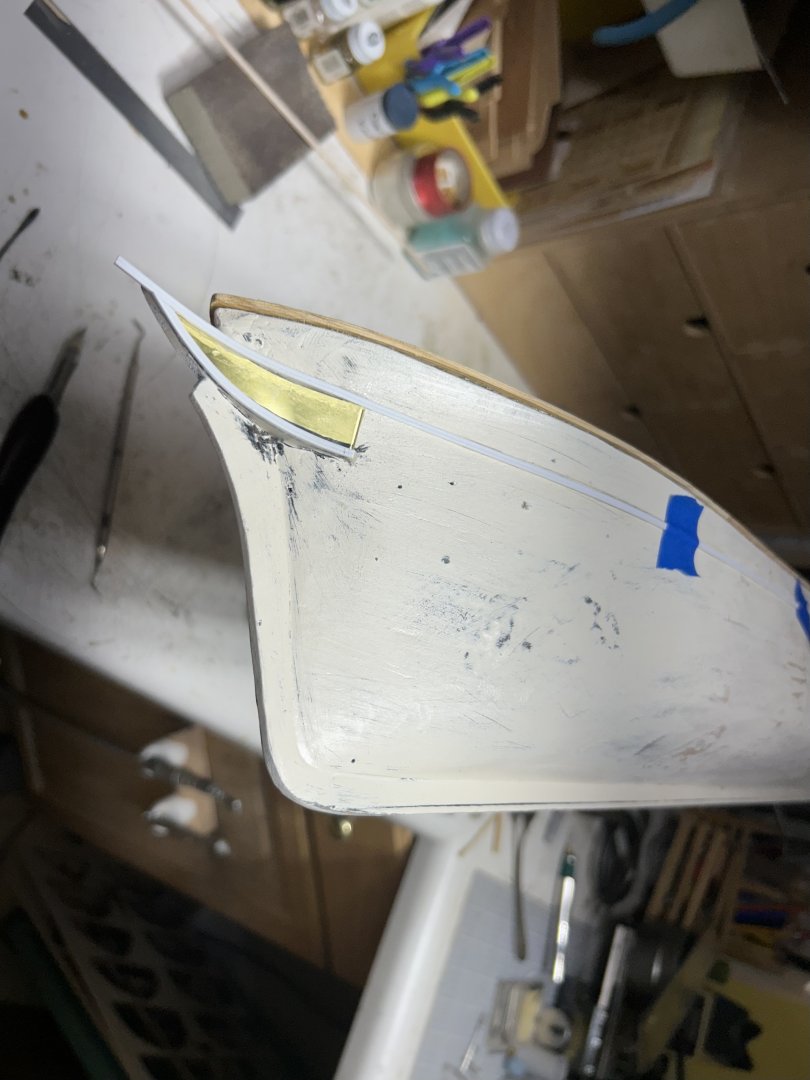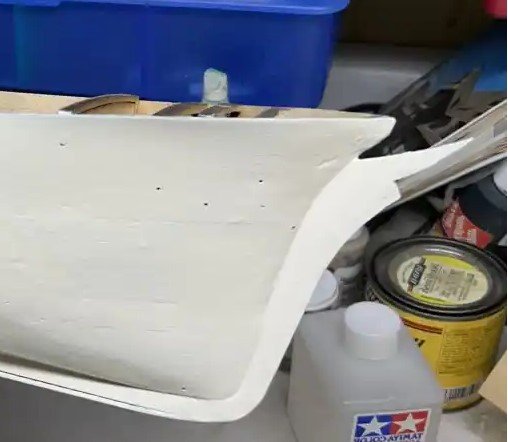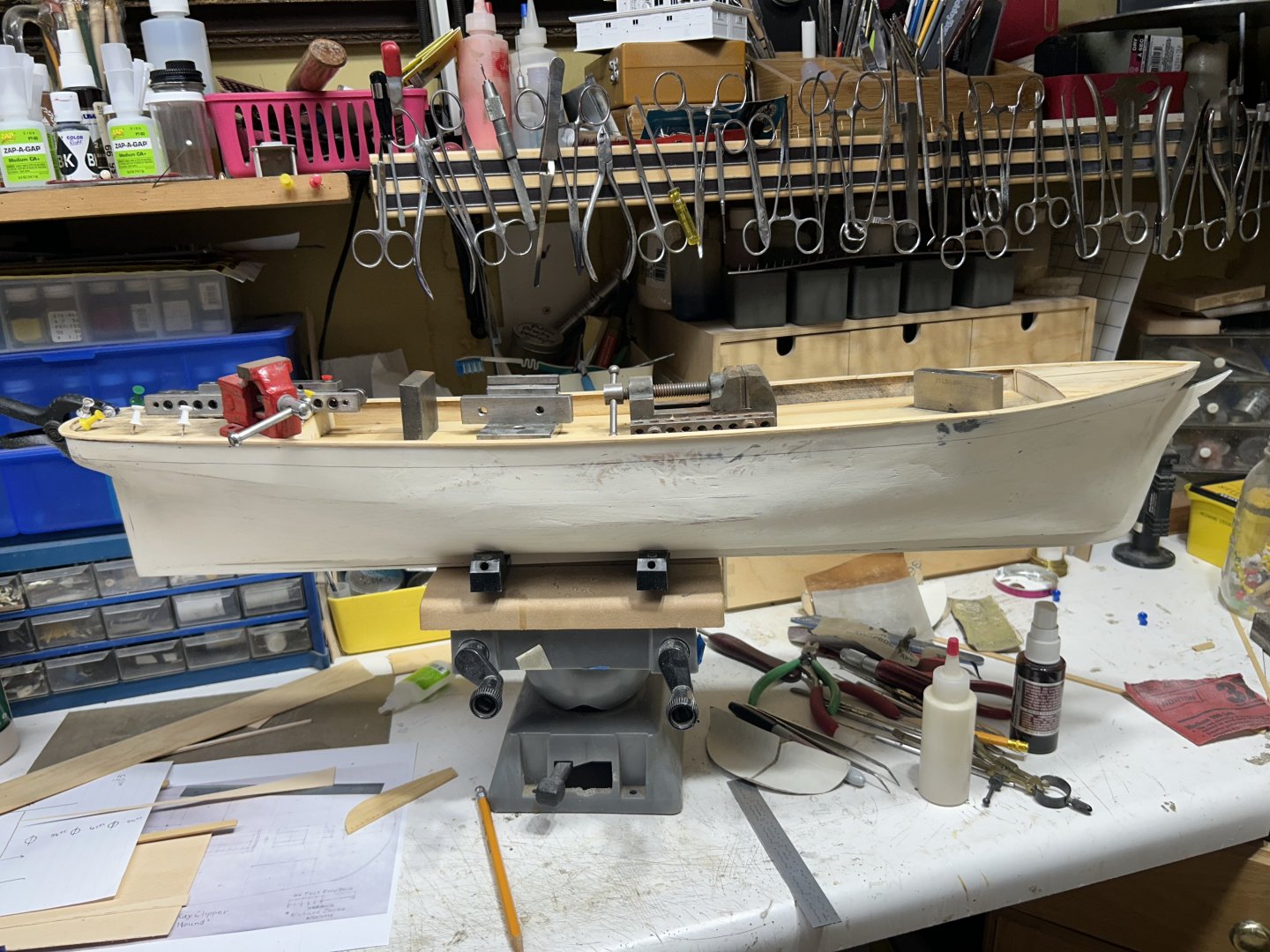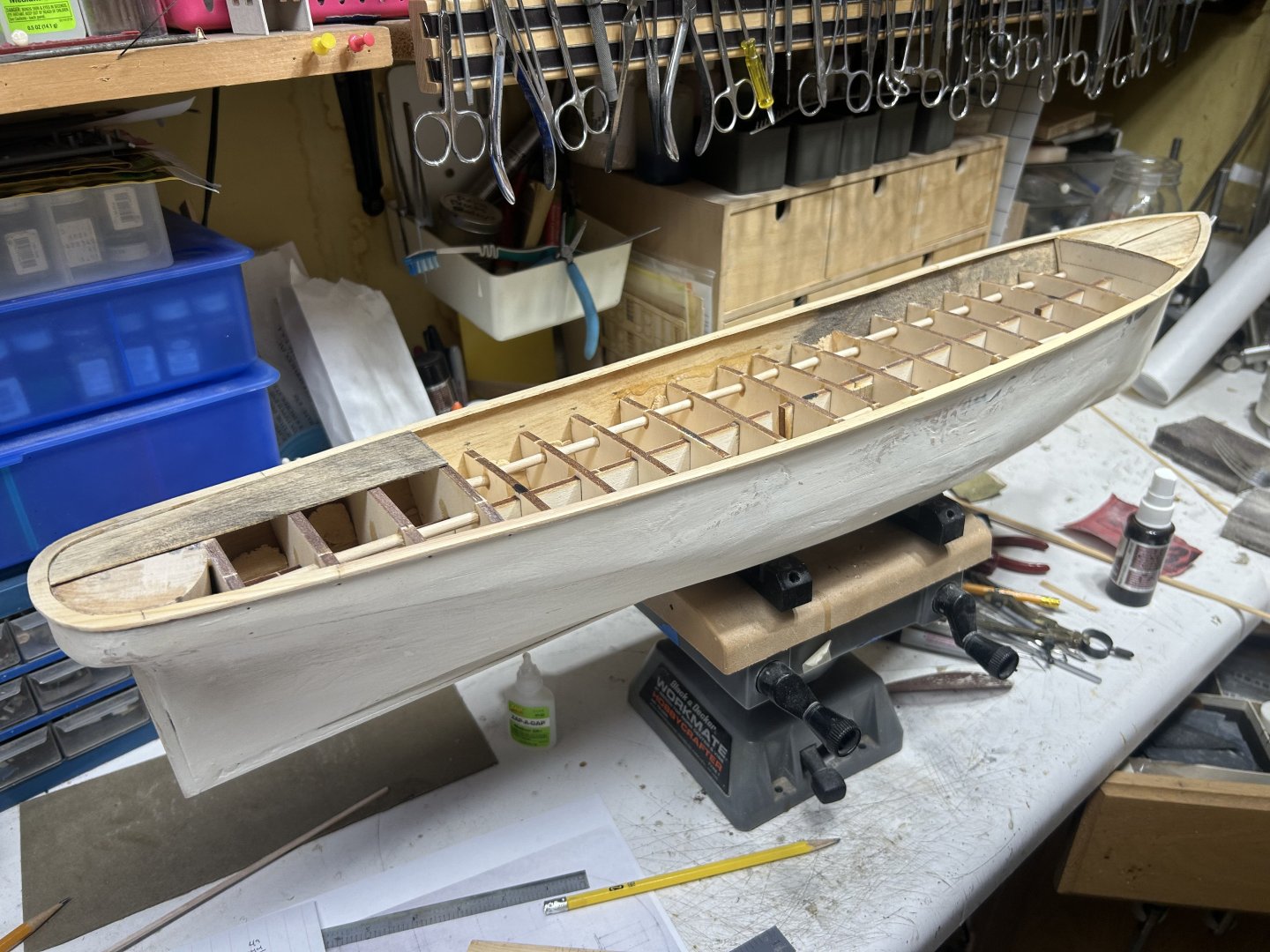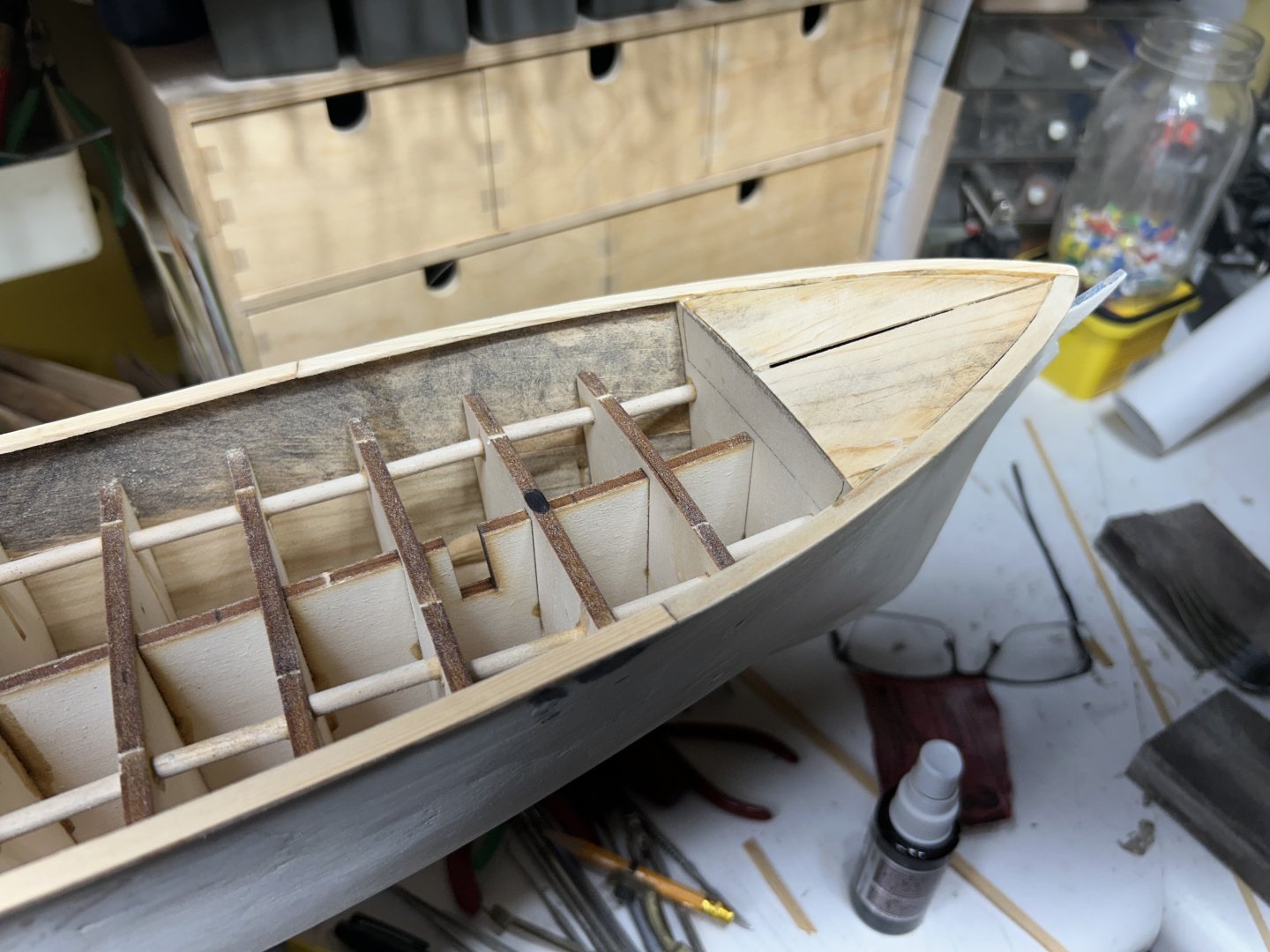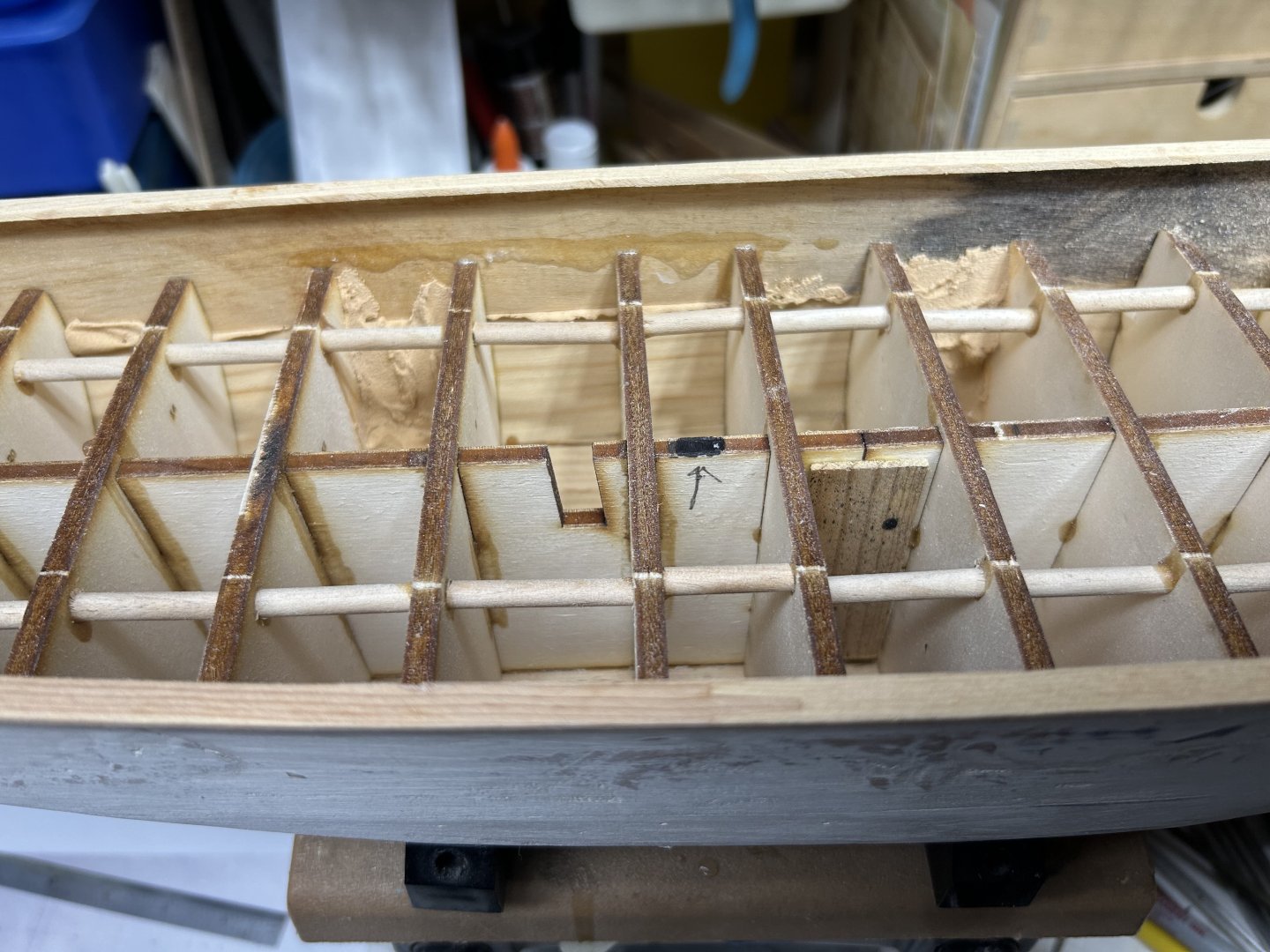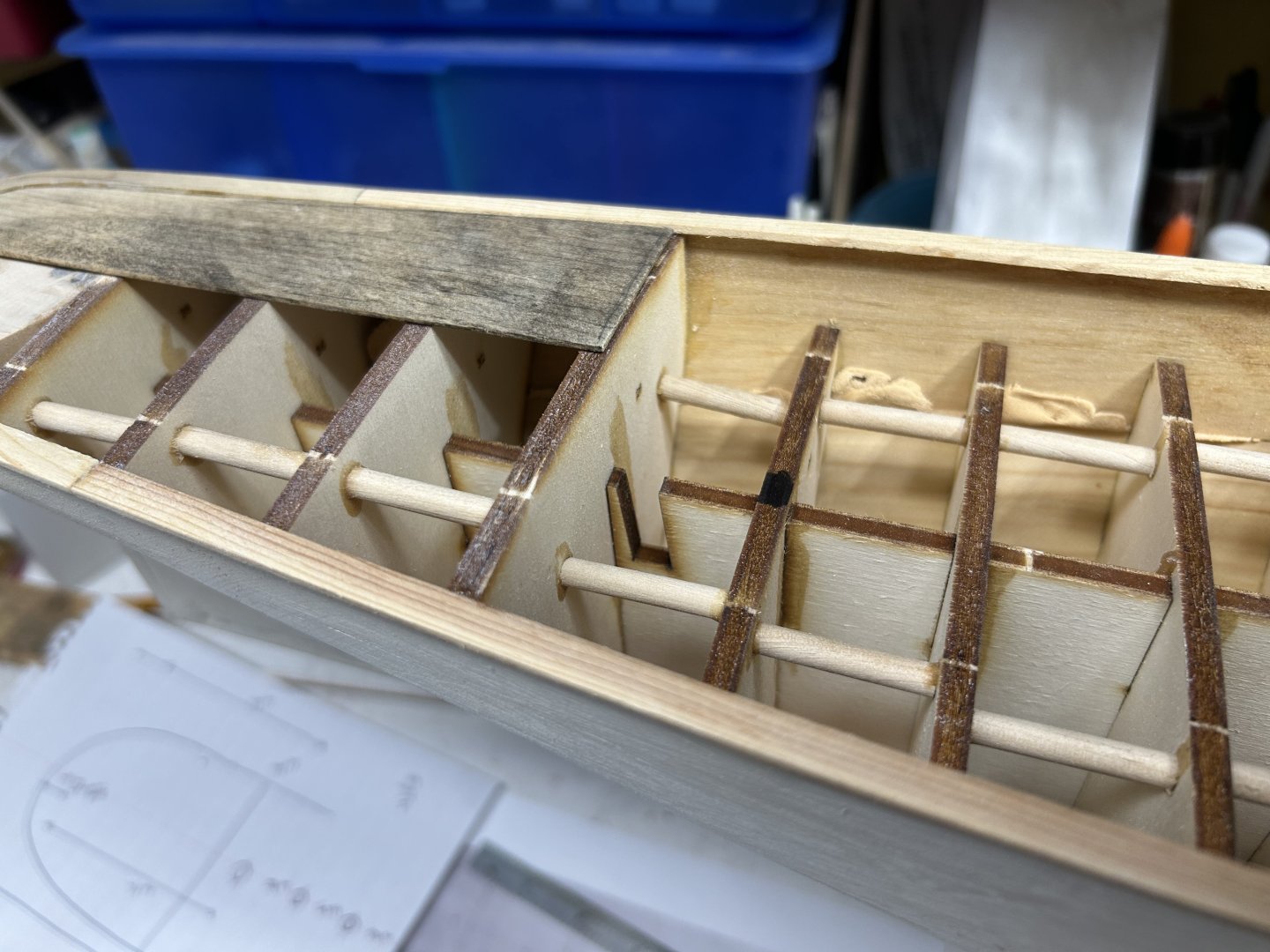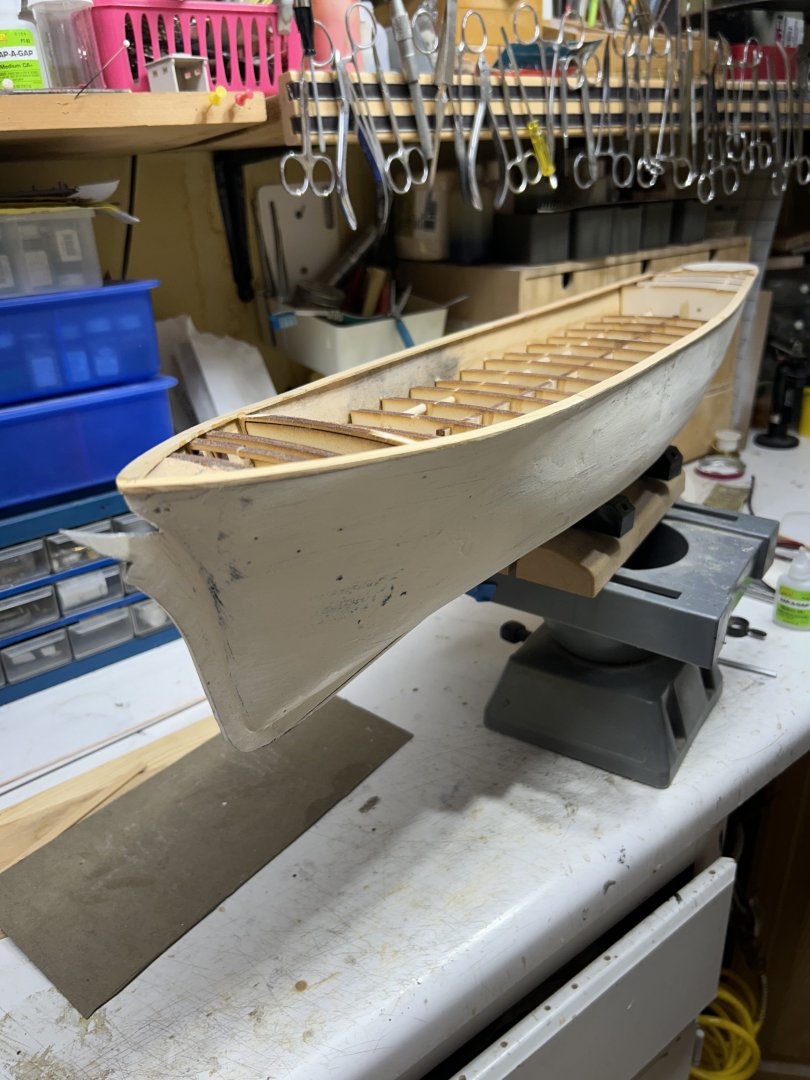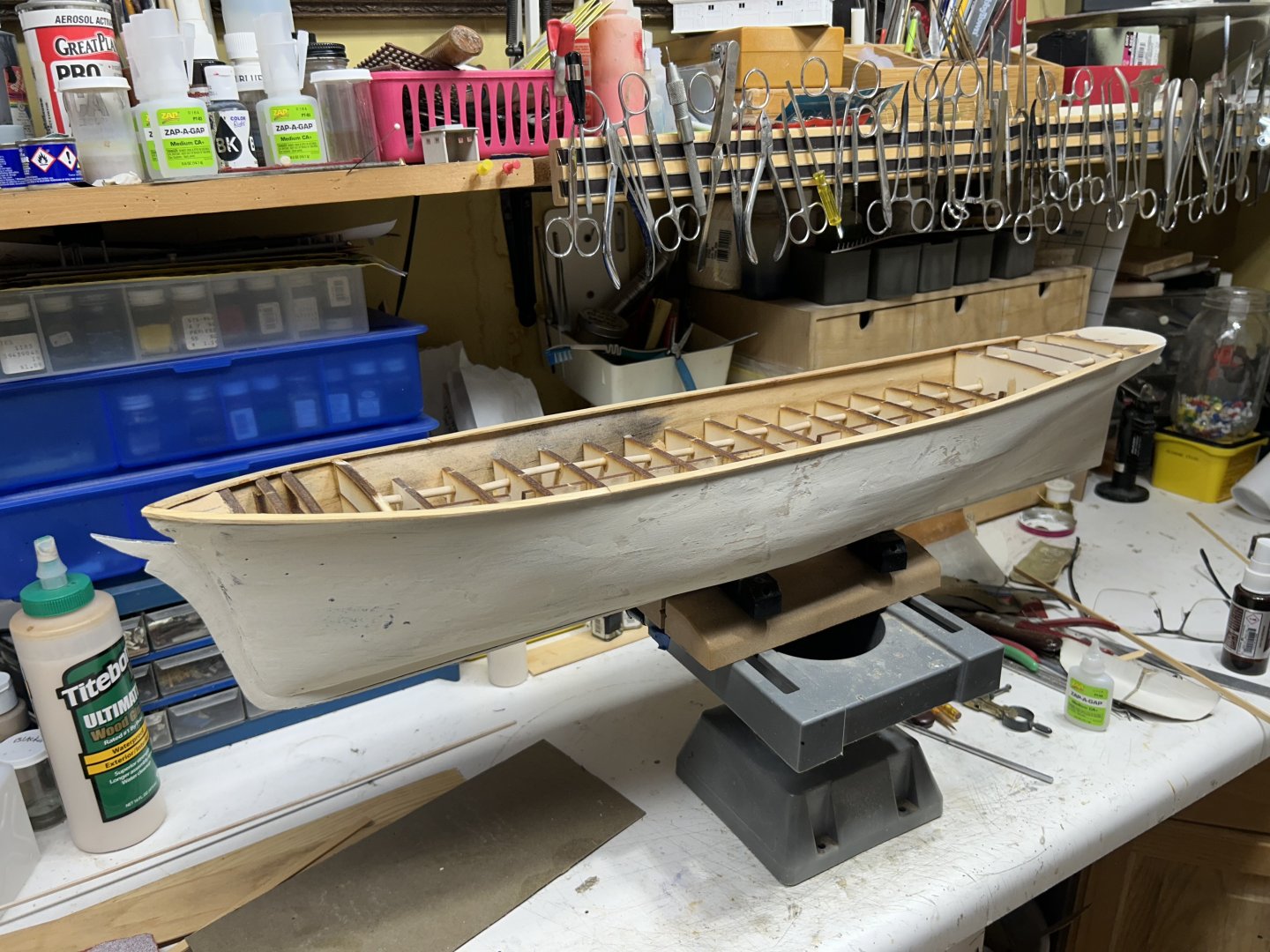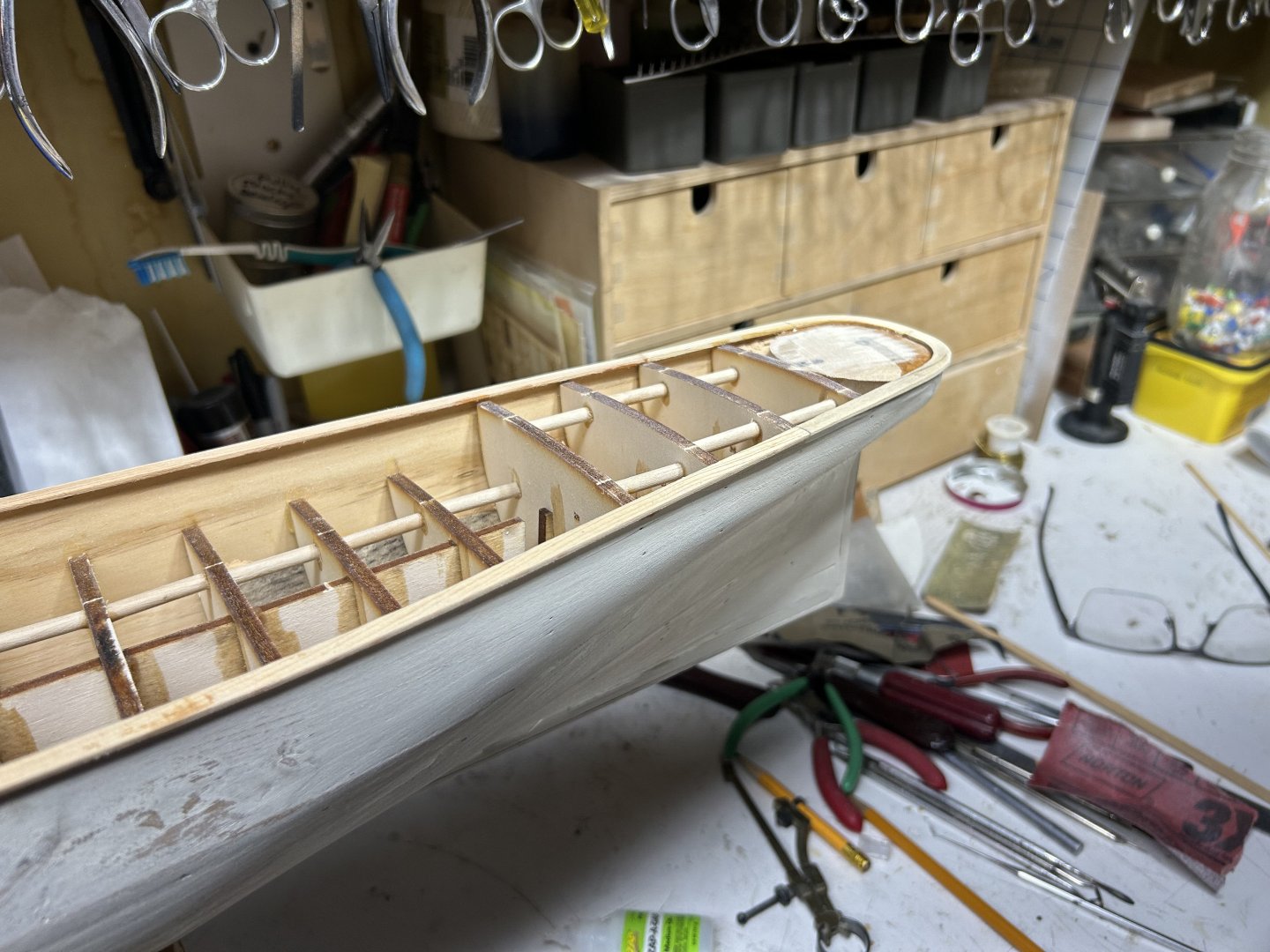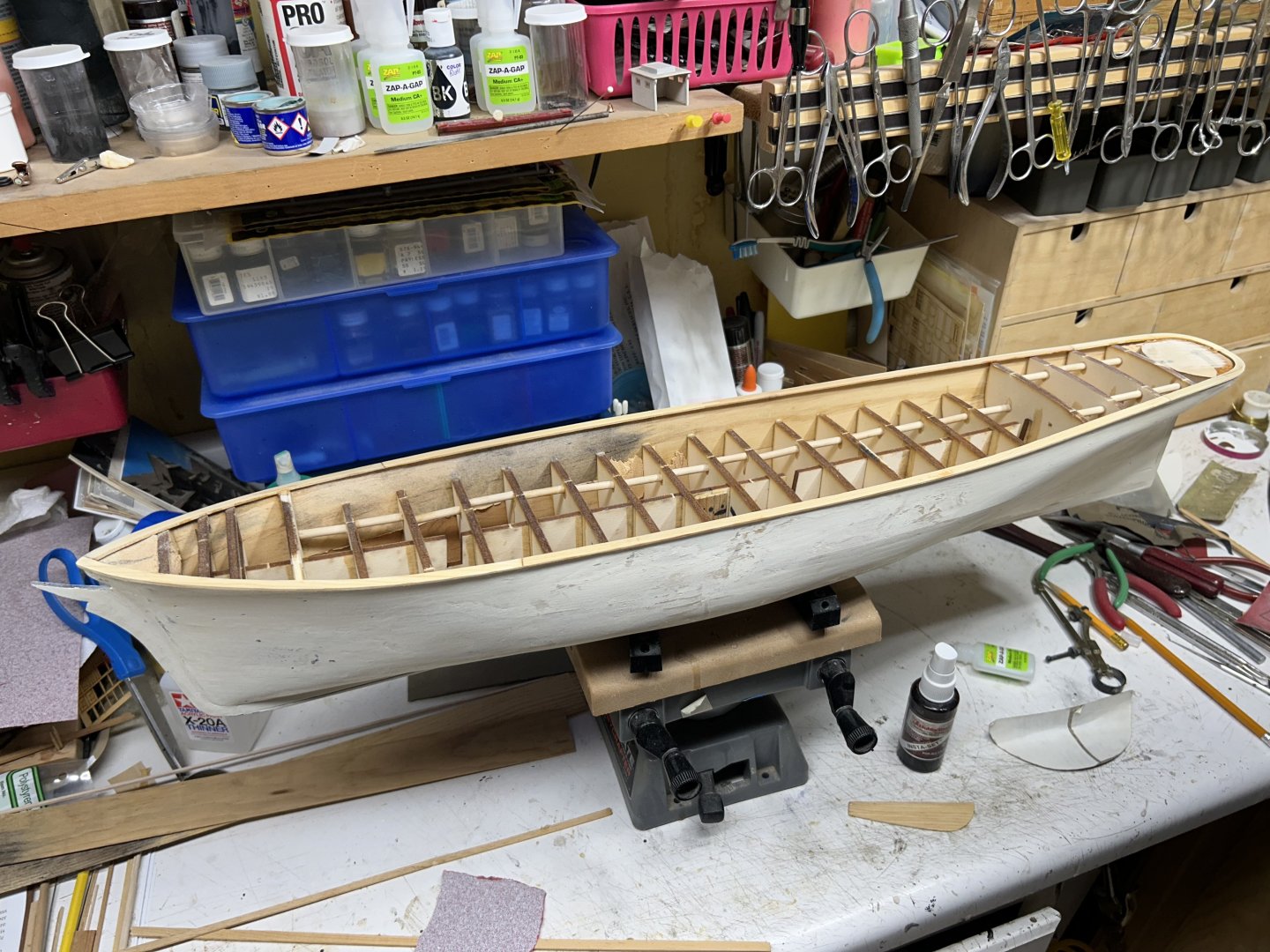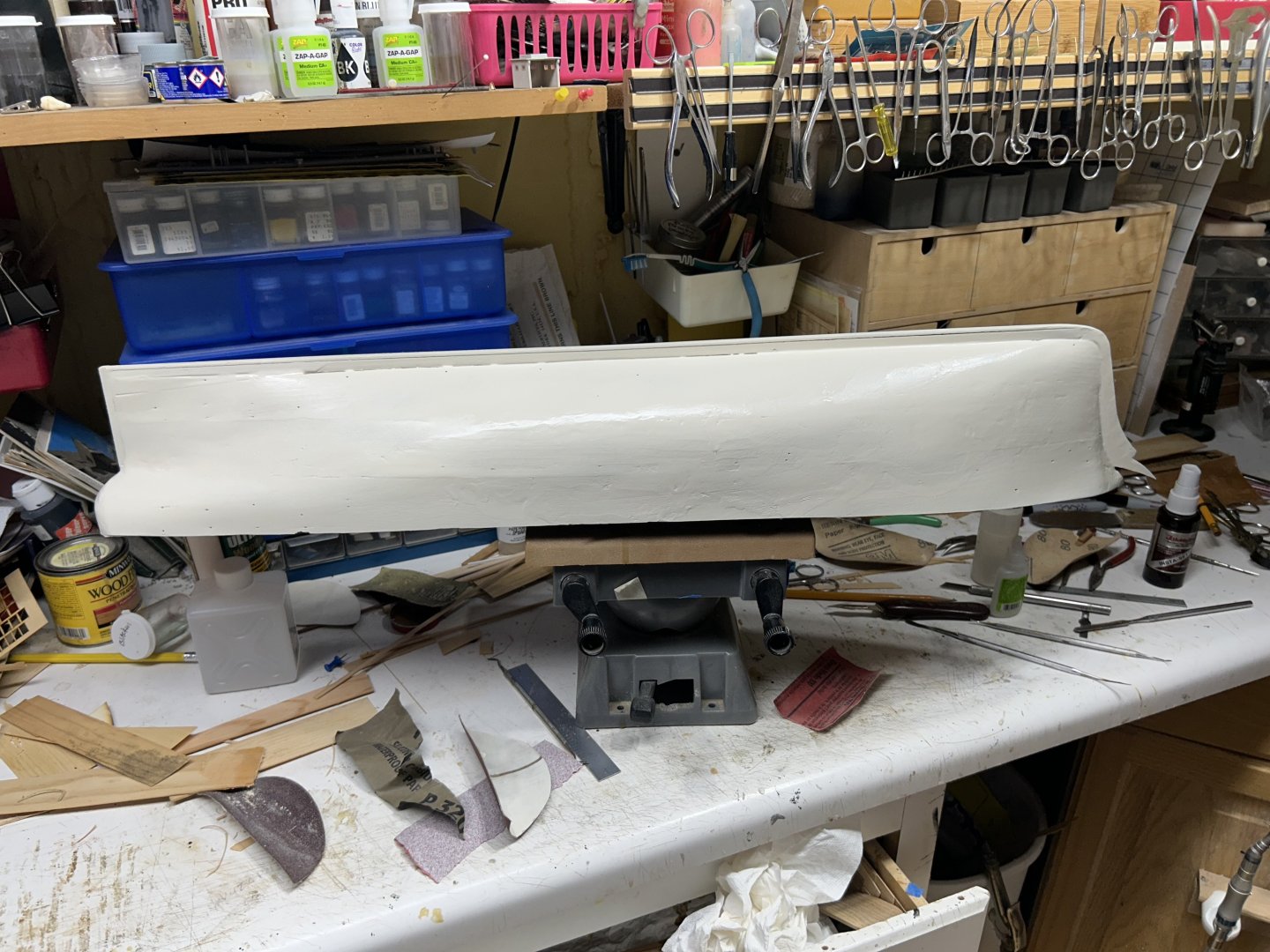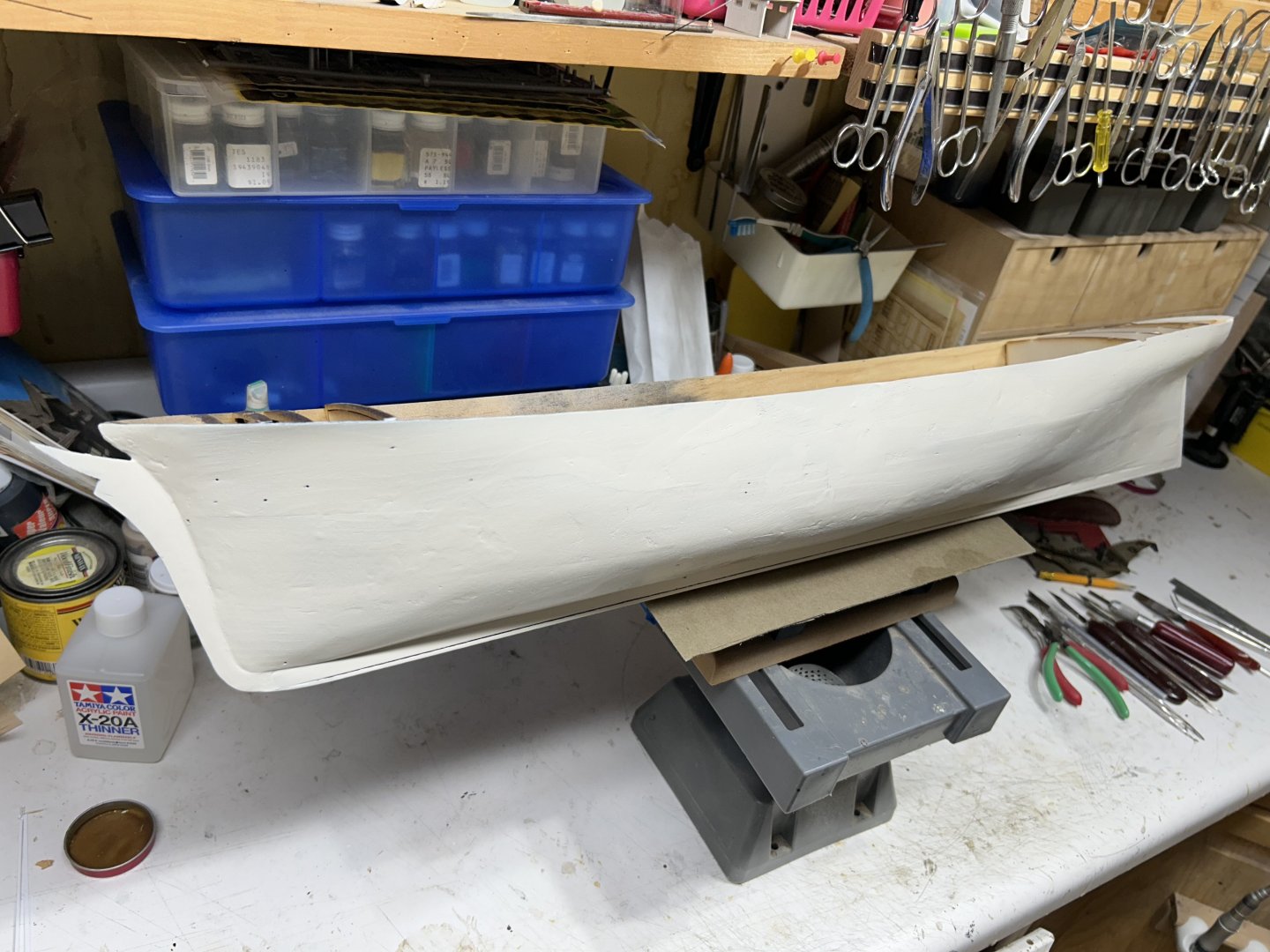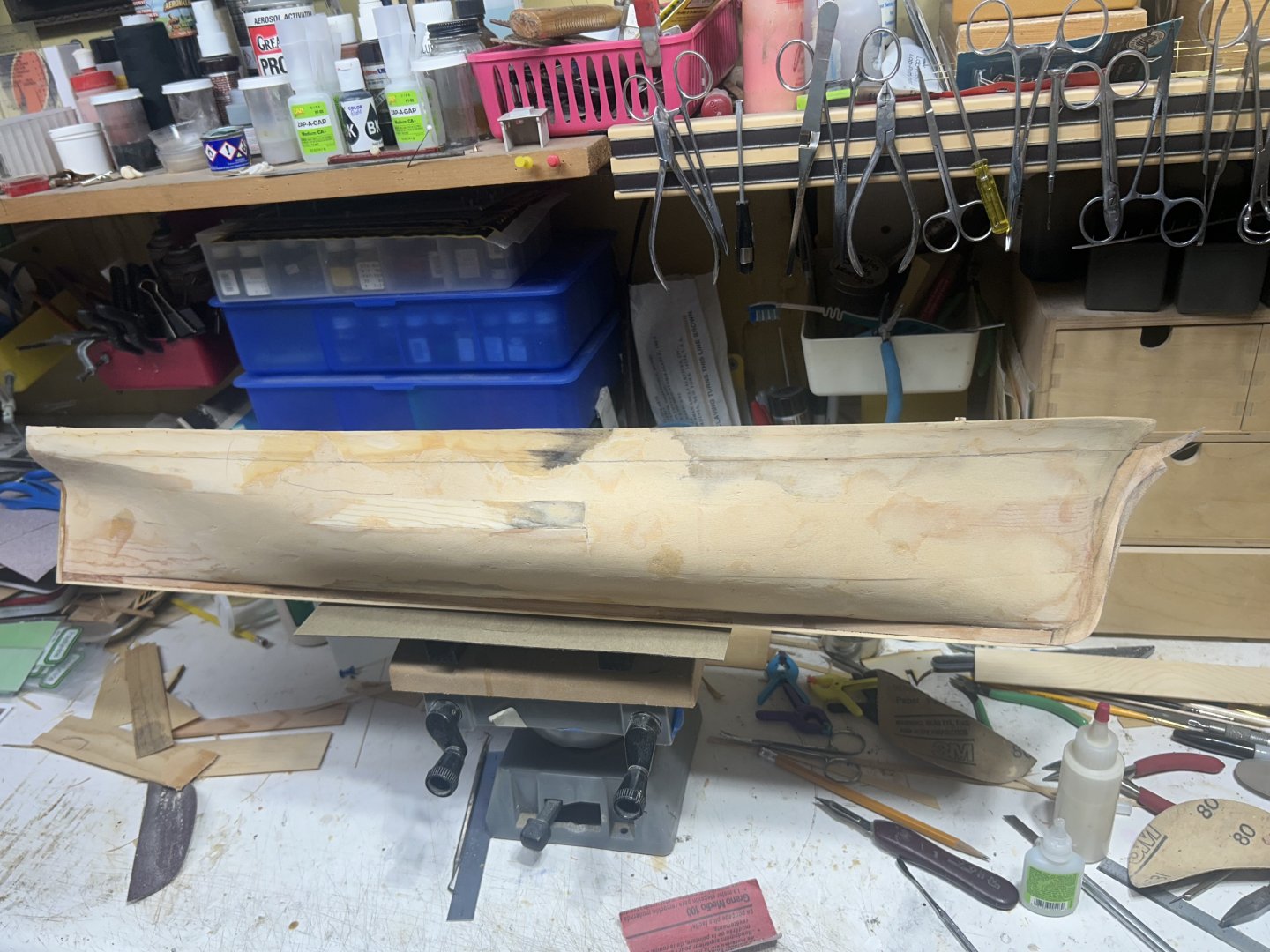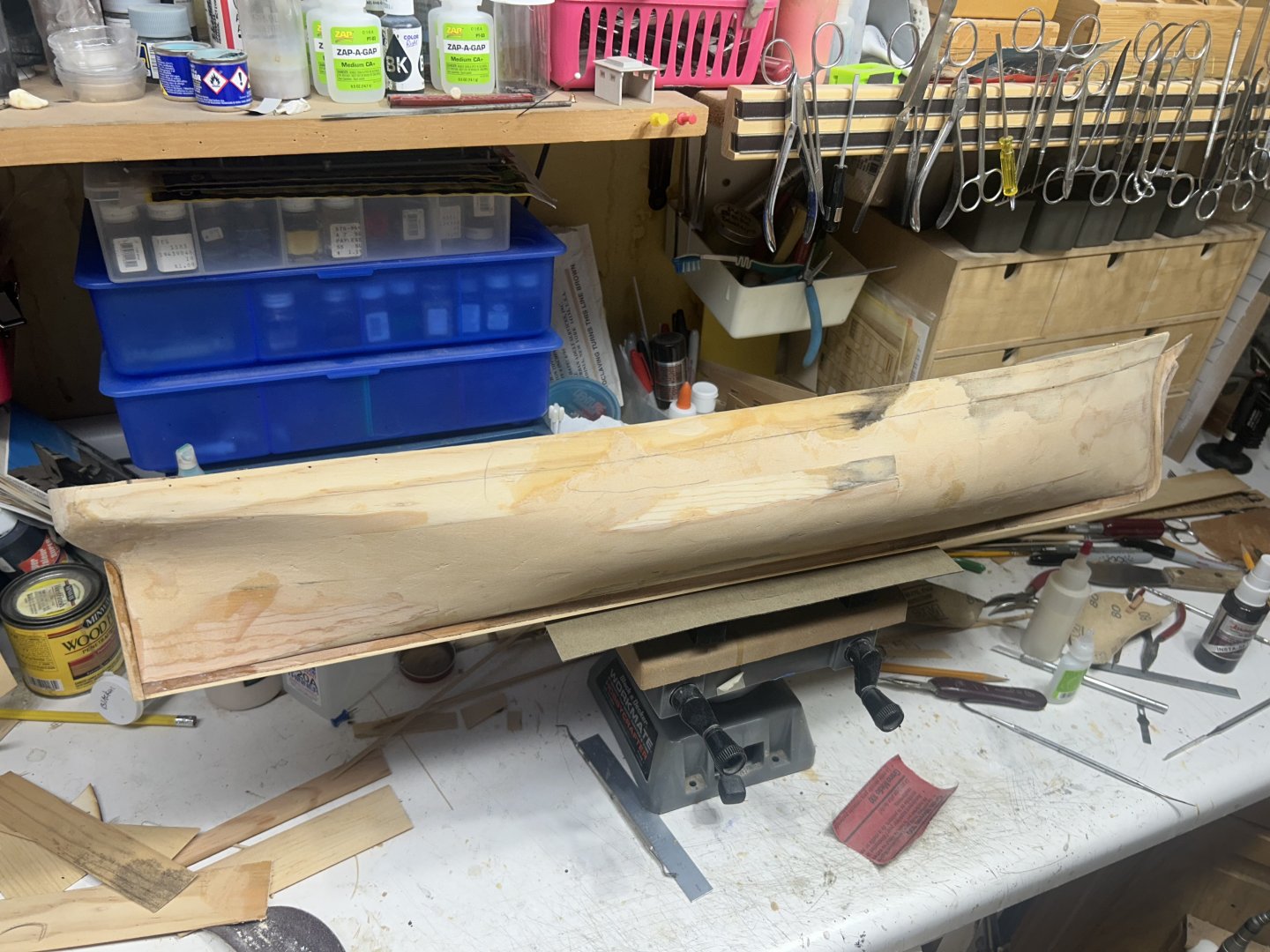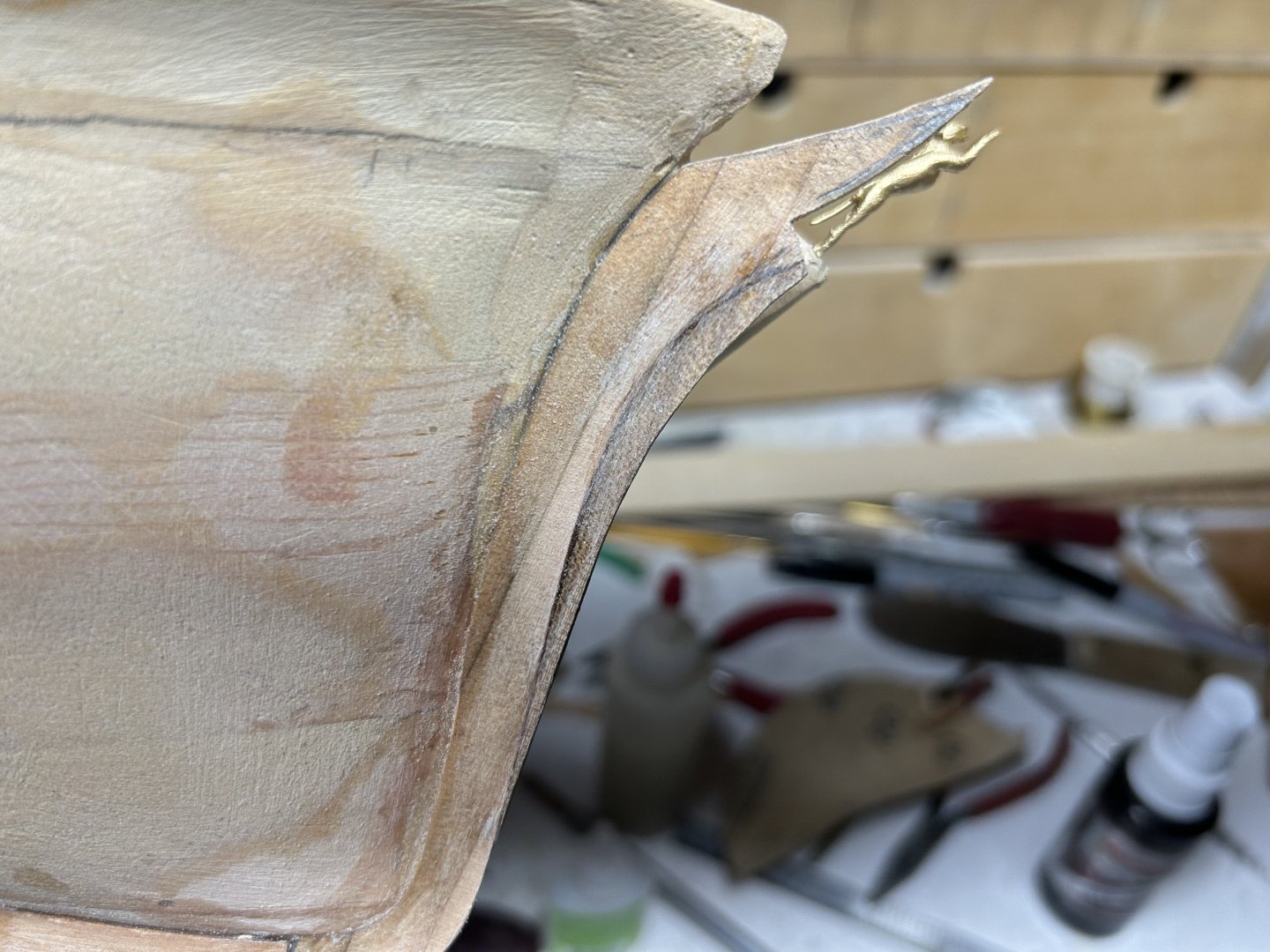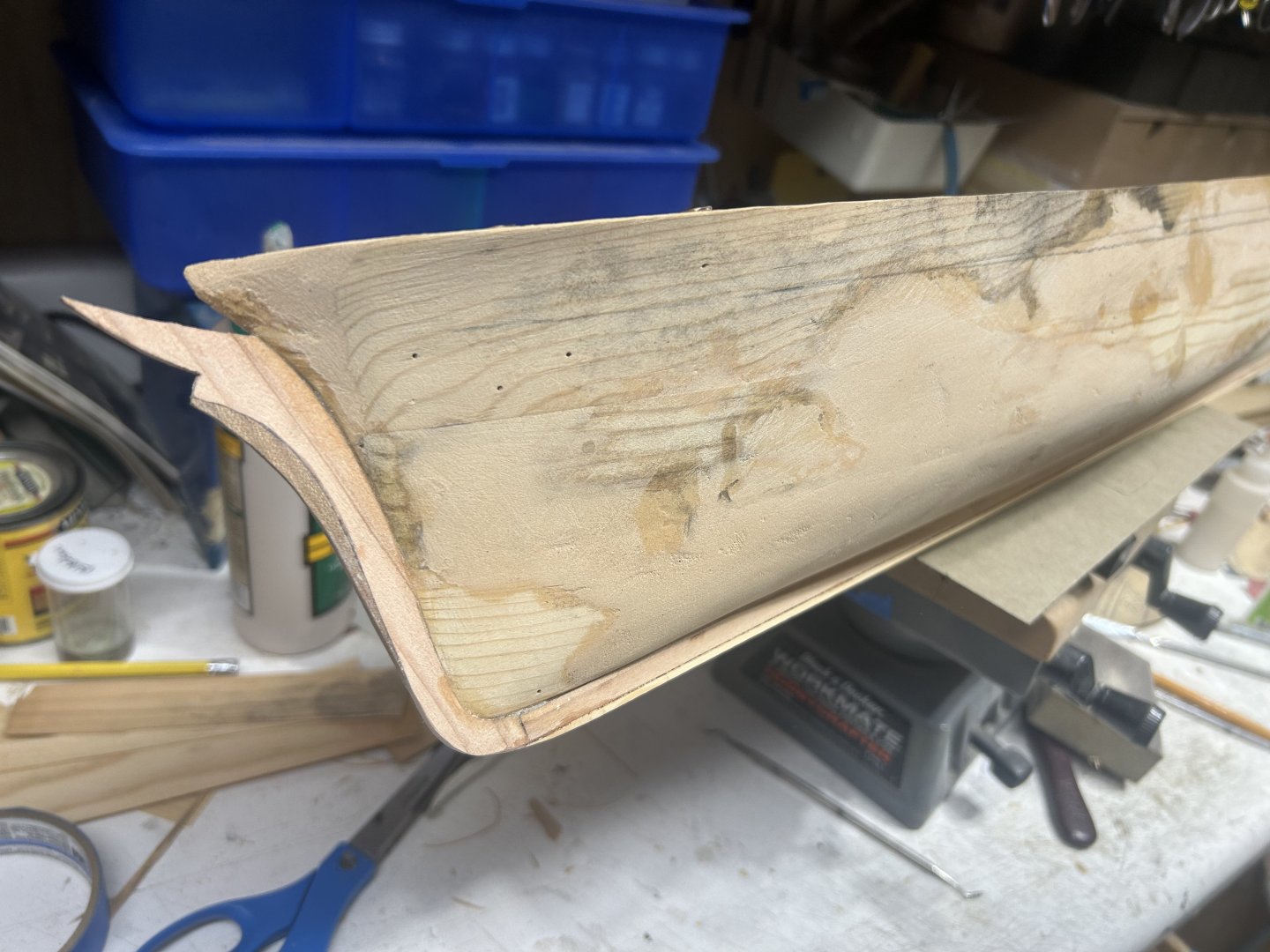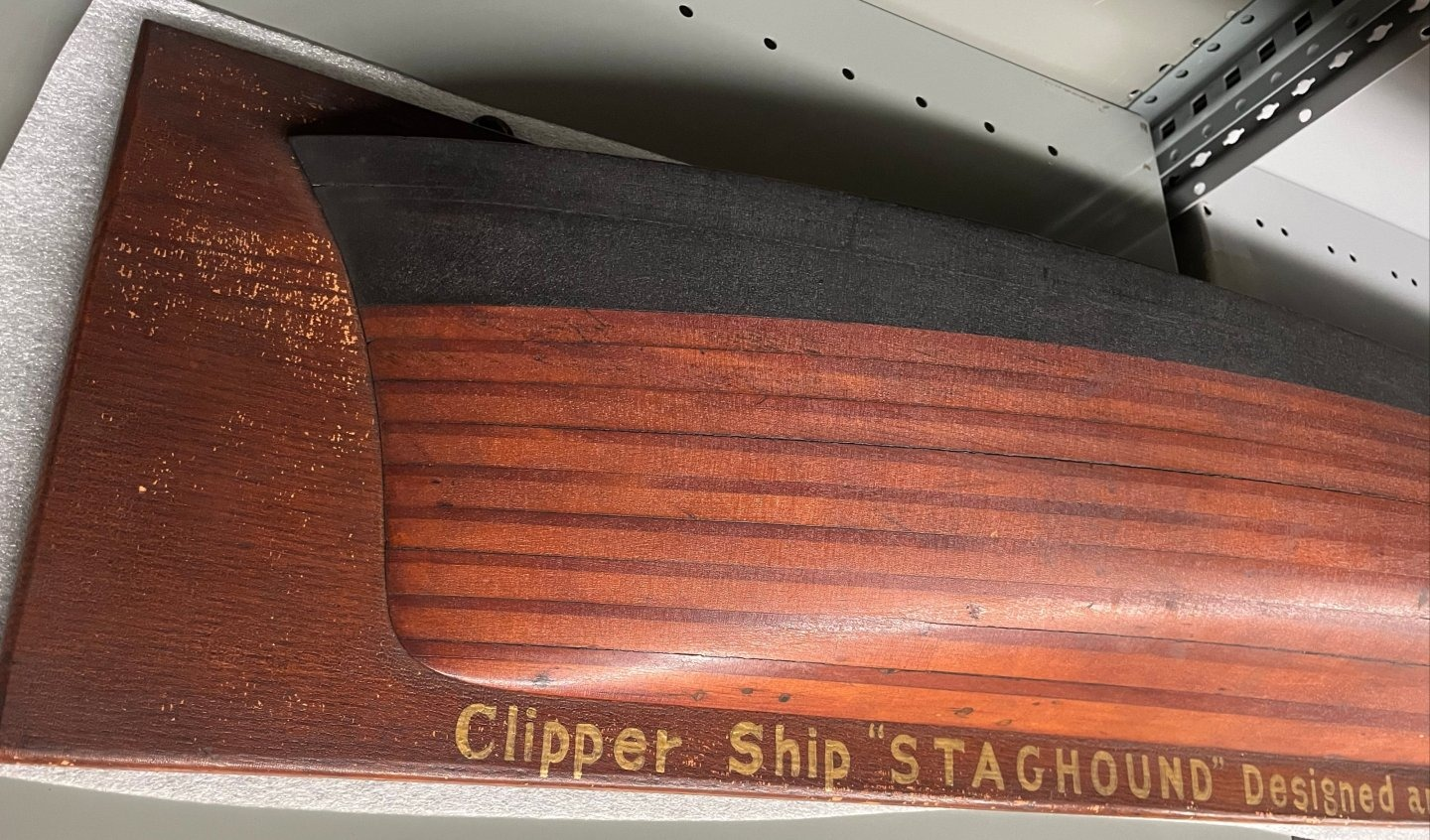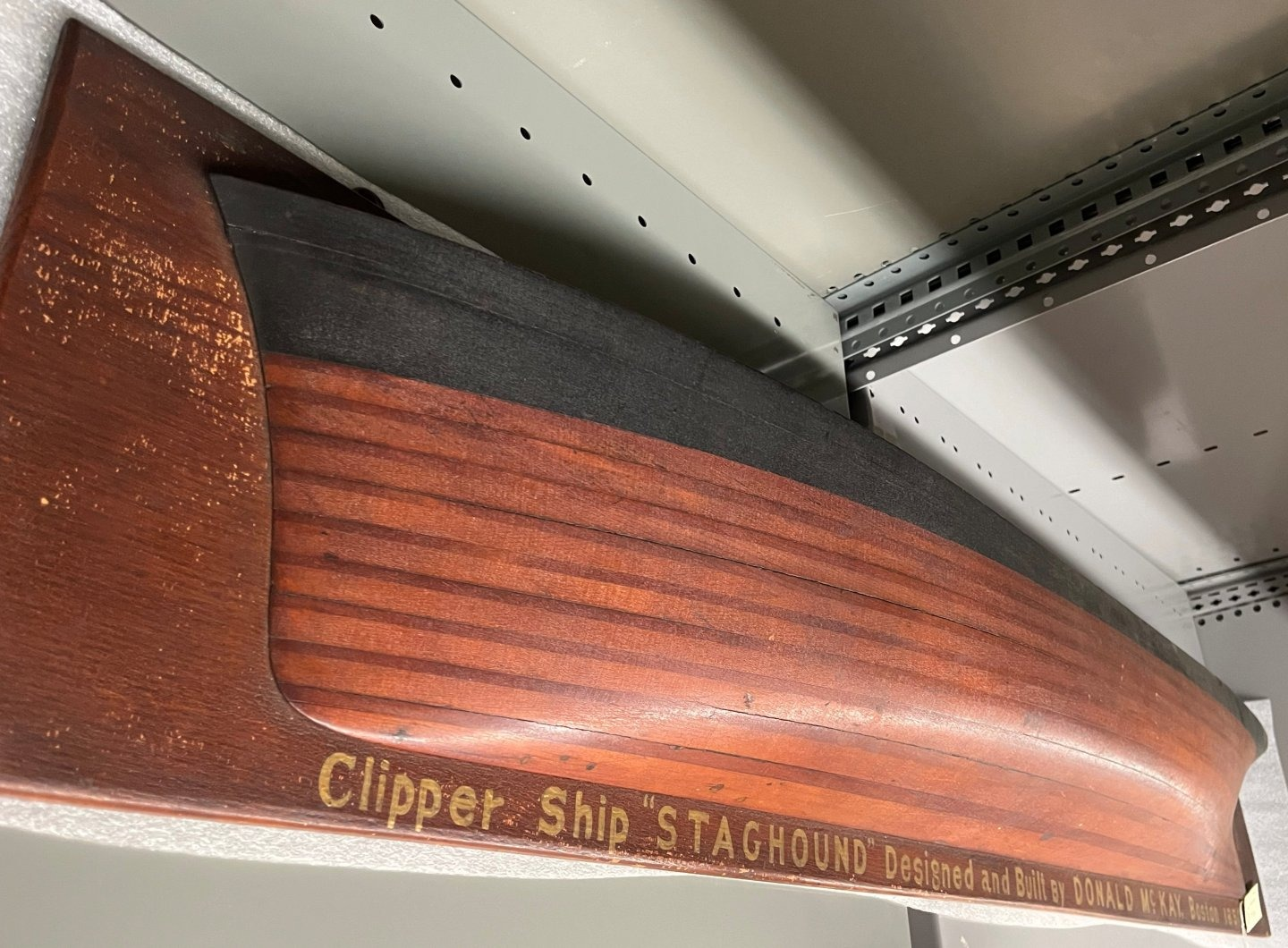-
Posts
5,512 -
Joined
-
Last visited
Content Type
Profiles
Forums
Gallery
Events
Everything posted by rwiederrich
-
Today's projected work schedule will include addition of the McKay *Hoods*....port and starboard. Once they are fabricated and installed, the addition of the leading planksheer moldings will be installed atop the leading edge of the *hood*. All the external moldings have to be installed prior to painting. Since the scroll work is unspecified, I can assume artistic license, in this matter. I prefer to get the external paint out of the way, prior to deck installation. Just makes keeping things over spray clean. Rob
-
The forecastle and poop decks are level with the main rail...once I add the scribed decking. I will then add the 18" monkey rail with its cap. I think when all is dry within...I will begin shaping and carving the molding on the rail cap. It has a kind of carved out center....creating two lobes similar to the planksheer molding (currently where the line is drawn). This same trim look will be carved on the monkey rail cap as well. (The stern rail around the stern stanchions will also be carved) (at a later date). It's these little details that set the build apart. I need to address these issues before I paint the hull black. As I look at it now....there are so many small details that need to occur at the same time...or there abouts.
-
Rich...recalculating my measurements...Her bulwarks are 6.5ft including the monkey rail. That means her main rail is at a height of 5.1ft where her poop and forecastle decking are located. Correct? Her planksheer sits atop her 12" waterways. I'm assuming her main rail is measured from the deck, not on top of the waterway? I am finalizing all these measurements so I can calculate the placement of the external planksheer Moulding, which is be 6" thick and 16" wide. Same size as the rail cap. fun, fun, fun... Rob
-
Fantastic work.....love the ingenuity used to form the ships bell. Great job. Rob
- 164 replies
-
- Red Jacket
- Marine Model Company
-
(and 2 more)
Tagged with:
-
I gathered that as well. I'm in the ball park then. Just asking. Plotting out the main rail cap and the 16" monkey rail. Inside will be the waterways and planksheer. I'll place the cap rail first, then the exterior planksheer. The Navel hood will go on first before that install. But before all that....I still need to finalize the stern. Rob
About us
Modelshipworld - Advancing Ship Modeling through Research
SSL Secured
Your security is important for us so this Website is SSL-Secured
NRG Mailing Address
Nautical Research Guild
237 South Lincoln Street
Westmont IL, 60559-1917
Model Ship World ® and the MSW logo are Registered Trademarks, and belong to the Nautical Research Guild (United States Patent and Trademark Office: No. 6,929,264 & No. 6,929,274, registered Dec. 20, 2022)
Helpful Links
About the NRG
If you enjoy building ship models that are historically accurate as well as beautiful, then The Nautical Research Guild (NRG) is just right for you.
The Guild is a non-profit educational organization whose mission is to “Advance Ship Modeling Through Research”. We provide support to our members in their efforts to raise the quality of their model ships.
The Nautical Research Guild has published our world-renowned quarterly magazine, The Nautical Research Journal, since 1955. The pages of the Journal are full of articles by accomplished ship modelers who show you how they create those exquisite details on their models, and by maritime historians who show you the correct details to build. The Journal is available in both print and digital editions. Go to the NRG web site (www.thenrg.org) to download a complimentary digital copy of the Journal. The NRG also publishes plan sets, books and compilations of back issues of the Journal and the former Ships in Scale and Model Ship Builder magazines.



